Collectors, like just about everyone else, have been stuck at home for months. For some it has been a chance to appreciate objects more keenly.
Philip Hewat-Jaboor
Everything depends on the way objects are placed, and where. Horrors in one place discount beauties in another,’ wrote the great collector and writer William Beckford while at Fonthill Abbey, his spectacular home in Wiltshire. Being immured at home has allowed me more time than I have enjoyed in many years to live with, and perhaps reevaluate, the works of art that I have accumulated or collected over recent decades – and to reappraise not only how they are appreciated, but also their display.
As Beckford realised, the display of works of art is an integral dimension of the pleasure of ownership. Moreover, taking the time to experiment with juxtaposing works often allows for new resonances and connections, hitherto unseen or thought of. Objects displayed differently speak to one another and the viewer in new and vibrant ways. The careful combination of works of art of different periods and disciplines is historically entrenched and deeply rewarding.
Although I am busier than ever with professional commitments, being at home has allowed me that supreme luxury – time. Never has there been a more opportune moment to enjoy ‘slow art’, to borrow a concept promoted in recent years by Susan Moore. Looking deeply at any work of art is of paramount importance to how we understand it; the lockdown has allowed me time to handle and reacquaint myself with works – to look critically, to examine closely, to really think about them.
I have spent some time rearranging my collection of ancient coloured ornamental hardstones and marble – kept around the garden – to discover how best to take advantage of the sunlight to show them off in their glorious colours. Inside, works that have perhaps arrived more recently have now had more careful attention given to their placement and interaction with other works of art. The addition of a marble plinth to a newly acquired porphyry vase seems to elevate its strength and beauty.
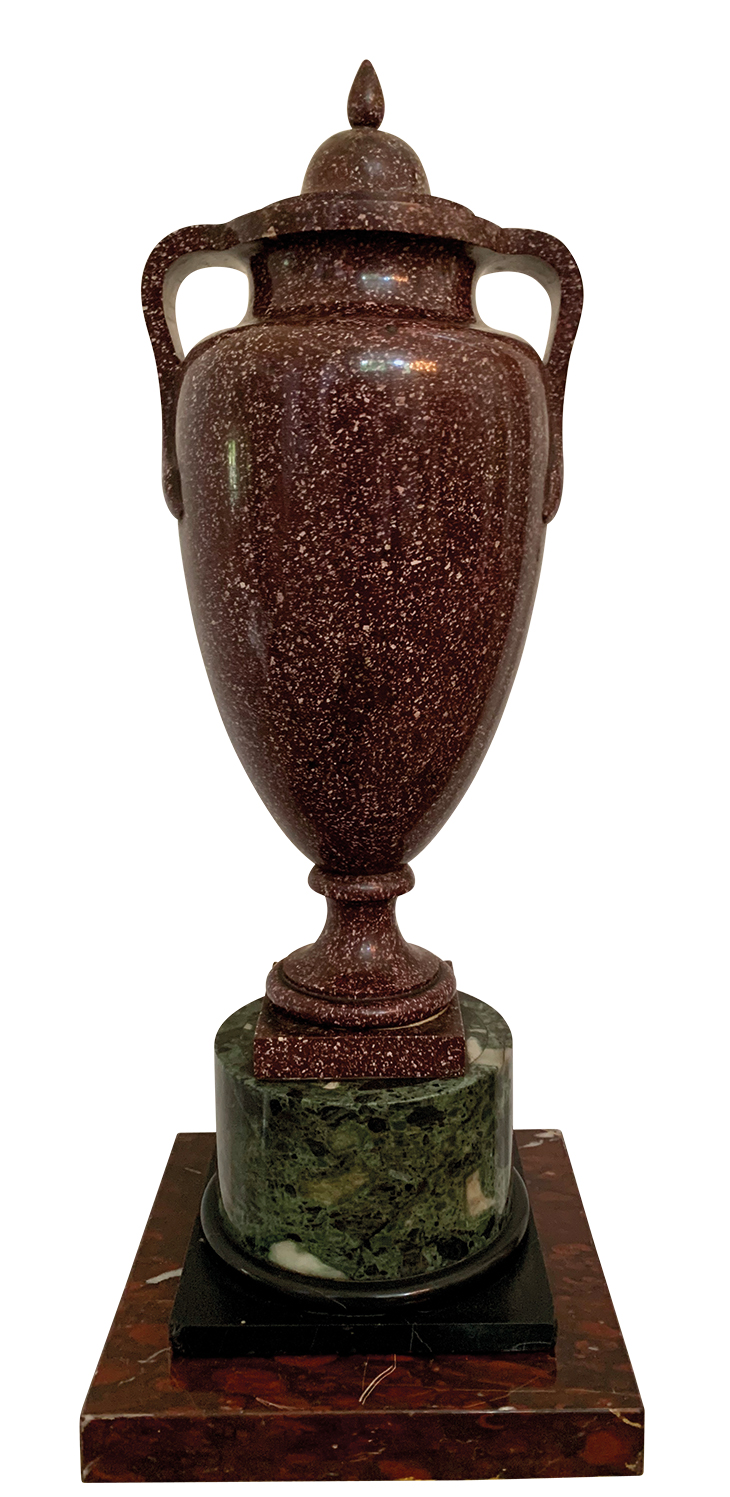
Roman Imperial Egyptian porphyry vase (c. 1785), attr. to Francesco Antonio Franzoni. Photo: the author
Aside from display, I have also been updating inventories and catching up on long-postponed research. One advantage of so many people being at home is that it has been far easier to gain the attention of sometimes difficult-to-reach scholars and dealers to help with research. And like many others, I have been exploring old storage space – in my case, this has meant looking at an inherited dinner service that I had never used. While washing it I discovered an inconsistency in the marks, and so posted an image with an accompanying question on Instagram. Almost immediately, this produced an answer: the dinner service turned out to have been made by Locré in the late 18th century but with later additions by Spode, made to increase its size.
The luxury of time spent with works of art allows for an evaluation of one’s collection and an exploration of gaps that would be interesting to fill. True collectors can never stop – call it a passion or an obsession. At any time, there is an abundance of beautiful works of art for the serious collector with a sense of connoisseurship and taste to discover, and during the current crisis this is no different. Dealers, auction houses and art fairs have been quick to provide collectors with a multitude of new digital platforms for the intrepid to explore. Seeing and handling is, of course, virtually impossible. During this period, I have not followed my rule of acquiring something only if I have seen in it person, having recently purchased a modest work in the form of a fragmented Egyptian porphyry fist from the third century. I am somewhat obsessed with porphyry and was reluctant to miss the opportunity, and I know and trust the eye of the vendor.
More broadly, business is being done – there is a strength in online auctions, and those dealers with imaginative websites and busy Instagram accounts are reaching new audiences as well as making sales. Inevitably there is, particularly at the top of the market, a certain amount of opportunistic buying. Competition for rare and interesting works is strong and the true collector seldom stands back for long.
Above all, however, the deep joy and pleasure of being surrounded by works of art, looking closely at them, absorbing their beauty and pondering their often romantic provenance brings an extraordinary sense of solace and tranquillity.
Philip Hewat-Jaboor is chairman of Masterpiece London, which was scheduled to open in late June but will not take place this year due to the Covid-19 pandemic. Masterpiece Online runs from 22–28 June, with a range of digital initiatives aimed at sharing the expertise of the fair’s exhibitors with the public.
Alice S. Kandell
During this period, I have been reflecting on how I became a collector. I will start at the beginning of a long journey. I arrived in the secluded Himalayan kingdom of Sikkim in the middle of my graduate school term, having travelled there with the special permission of my Harvard professor who had unexpectedly granted me a three-week leave of absence to make the journey. Sikkim, which is now part of India, shares borders with Tibet, Bhutan and Nepal.
My purpose was to attend the coronation of my college friend Hope Cooke who, following her marriage two years previously to the Crown Prince of Sikkim, was now to be Queen, and her husband King. (Hope was the first American to be crowned a queen.) I arrived in Sikkim on a bleak rainy day, clouds and mist covering everything. Monks chanted through the night, praying for good weather for the coronation day. The morning brought an incredible blue cloudless sky; white, snow-capped mountains appeared, together with red, yellow and gold-carved Buddhist monasteries and the figures of Buddhist lamas draped in maroon and saffron robes.
As we entered the royal chapel for the ceremony, I was overwhelmed by the mystique and beauty of the art, by the paintings, sculpture, wall hangings, and brocade ceiling canopies adorning the royal chapel. The flickering candles in the dark chapel and the low chanting of monks were mesmerising. This was the art, the paintings, the golden statues and the spiritual ambience that would never leave me.
When I returned to school afterwards, the beauty of the Tibetan Buddhist art continued to haunt me. I returned to Sikkim whenever I had the chance during college breaks. I longed to take some of the art with me, but Buddhist art is never for sale: it is used in daily ritual and religious life. All I could do was return to Sikkim again and again.
Back in New York, Tibetan refugees began to arrive, and I was slowly able to acquire some Tibetan art. Gingerly I tried to approach that amazing feeling of spirituality in the Tibetan chapel in Sikkim. I loved every statue, painting and religious object brought to me by Tibetan people in New York, poring over every piece, small or large, that became available. Each object has a story and each rings a bell deep inside me that I cannot explain. If a beautiful Tibetan piece is presented to me, I try to acquire it and save it, knowing it can never go back to its original home in Tibet. The pieces do not belong on the open art market because of their religious and spiritual significance.
Collecting can be a passion; at least it is for me. When I see a piece and it is of the highest quality, it triggers a response. It’s strange how that can happen. I share my passion with my friend Philip Rudko, who says: ‘Don’t talk to me about collecting Tibetan art. It’s an addiction. It’s easier to get off of heroin.’ And so it was with me. Perhaps it’s a bit like that for all serious collectors. I have a friend who collects blue glass bottles. Peggy Guggenheim said that contemporary paintings ‘talked’ to her. My own dialogue is with Tibetan art.
Gradually, as my collection grew, I formed it into a Tibetan shrine room, following the model of a wealthy Tibetan home or a small chapel. Eventually, some 250 pieces resided in my dining room. The collection had become so large that I realised that, although I am not a Buddhist, in the Buddhist tradition of non-attachment, objects do not belong to me. They belong to all people. I donated it to the Smithsonian in 2010.
The passion continued, however, and whenever a piece of antique Tibetan art – a statue, painting or object – comes to me, it is difficult to say goodbye. And so now, 10 years on from the gift to the Smithsonian, I have formed yet another shrine room in the same, now-sacred space. Once again it has taken over my dining room. Since the spread of Covid-19, I have had many moments in this special room filled with Tibetan Buddhist art. I no longer worry about whether I should share it with the public. Seclusion has prohibited that. I have time privately, quietly, surrounded my collection, to contemplate, to think and to appreciate being safe. I may not be a Buddhist, but I am protected inside my own spiritual realm, with its quiet peace, not diverted by everyday distractions. There is no need to worry about more collecting or to be anxious about restoration. It is a pensive time, a time for my collection to care for me.
Alice S. Kandell is a child psychologist, photographer, author and collector based in New York.
From the June 2020 issue of Apollo. Preview and subscribe here.
Unlimited access from just $16 every 3 months
Subscribe to get unlimited and exclusive access to the top art stories, interviews and exhibition reviews.

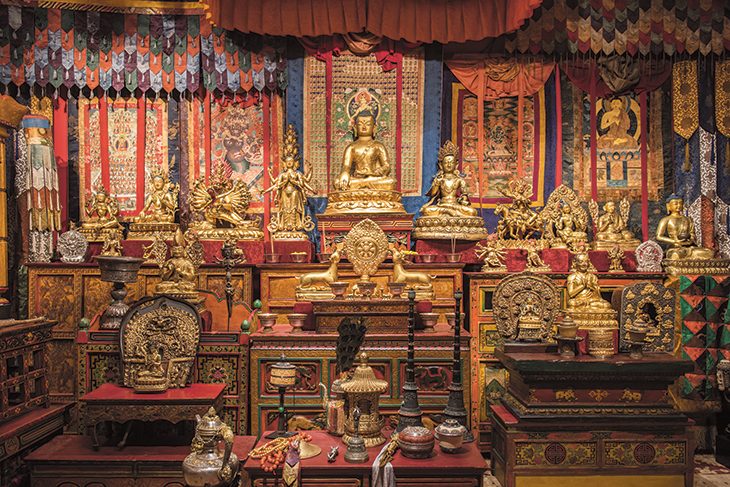
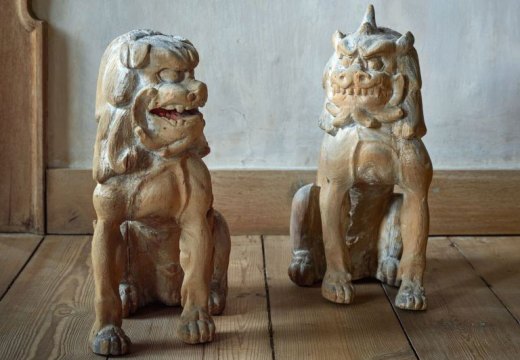
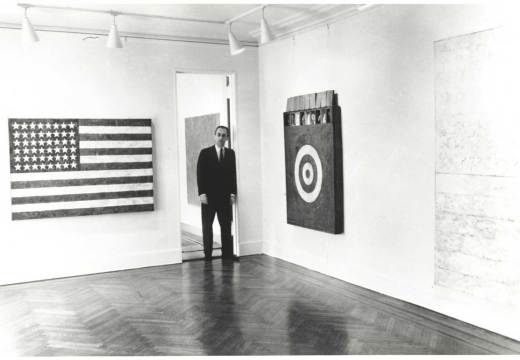
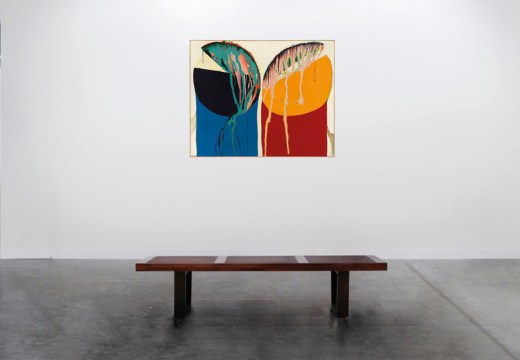









![Masterpiece [Re]discovery 2022. Photo: Ben Fisher Photography, courtesy of Masterpiece London](http://www.apollo-magazine.com/wp-content/uploads/2022/07/MPL2022_4263.jpg)
It’s time for the government of London to return to its rightful home